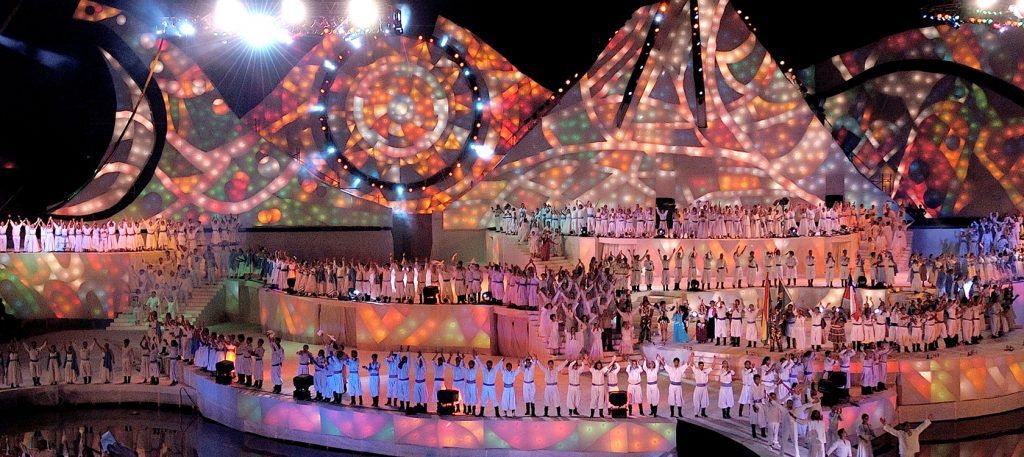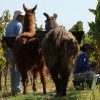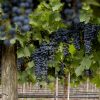All countries that make wine have their own harvest festival. Since ancient times, men have celebrated the mystery of grapes turned into wine. But there are celebrations and celebrations. There are those that are very traditional, with the treading of grapes and medieval markets, as in some cities along the Rhine or in La Rioja, and some more modern, like the Hall of wine and food in Melbourne. There´s a party, however, that by its scale and enormity, stands out by far: La Fiesta Nacional de la Vendimia (National Harvest Festival), which has been taking place in Mendoza for precisely 80 years ago, and this year, 2016, it is on Saturday March 5th.
The pièce de resistance of the festivities of wine, the Harvest Festival, as it is known, marks a time of celebration in Mendoza; tables abound with wine, wineries abound with tourism – music, art exhibitions, food festivals and people celebrating everywhere you look, like the final gasp of summer. It is the ideal time to visit the province.
The party closes the warm months of celebrations, from January to March, across 18 departments of the province. But it also marks the beginning of the harvest of the reds. Therefore, in Mendoza it is celebrated in a big way: a parade of colourfully designed floats and an eye-catching show of dancing and music for 50,000 people, all crowned by the election of a harvest queen.
Now, what are we really celebrating? What makes it so special? And above all, why is it done?
Harvest, the ritual. In ancient times, when the Greeks and Romans sailed the Mediterranean with their galleys, vintage was a unique moment. For them, the harvest of grapes marked the end of summer and, with it, the period when the world sleeps the sleep of winter. It was also the celebration of fertility. And they celebrated unceremoniously with great libations (as it was called then) and hecatombs of oxen, sheep and cattle as an offering to the gods. It was a time to make peace with the gods and offer them something after the cold, grey days. That tradition continues today, though the gods and horizons have changed.
Mendoza in vintage. For half a century, from 1870 to 1920, Mendoza became much stronger as a wine producing region. The number of wineries grew from 420 to 1,100 as did the number of hectares planted, and the province became bound to wine. The first celebrations were made in 1919. There was another vintage, however, that took place among the vines, with guitars and hearths, as the vineyard workers ended their work.
The party is born. It was in 1936 that the first celebrations as we know them today were held, with a parade of floats and the choice of a beauty queen. The original idea came from Frank Romero Day and Guillermo Cano, as it was they who took charge of organising a show to celebrate how important Mendoza had become for its wine industry. Since that year, the party has grown and expanded. For example, the Himno a Mendoza, can be heard in every corner of the province, each vintage. Among the parties held in the different departments or areas of the province, at which candidates are elected, two in particular stand out: Rivadavia Canta al País (late January) and the Festival Tonada (February). The first celebrates popular music; the second, the romance of Mendoza with folklore, where the tune, an interpreted lyrical genre with guitars and accomplished voices, is key.
Procession of floats. Following the ancient tradition, during the harvest festival which Romero Day and Cano had invented, the parade of floats made famous by imperial Rome were now being used in a contemporary, Mendocino event. Eventually, it would become the hallmark of the party. Strictly speaking, there are two parades. One at night, on the Friday prior to the main event, called Via Blanca. This year it will be on the 4th of March. Carts full of lights, parade through the center of the city, along Avenida San Martin, and repeat the journey the next morning from General San Martin Park to the center, a distance known as the Carrusel de las Reinas (Queens Carousel). Whether at night or during the day, the floats are the highlight of the parade. Everyone celebrates the produce and as they pass the crowds, grapes, apples, peaches are given away to the people.
The party. The main event is something worth seeing. This year it takes place on March 5th and offers two repetitions, on the 6th and 7th. It is a show that attracts wine lovers from around the world and offers a unique opportunity to experience Mendoza. For in the days before, the city vibrates with a special joy. People fills the Greek style amphitheatre, whose name could be none other than Frank Romero Day, where the festival takes place. So much so that in the surrounding hills there are even more people than inside the amphitheater. Everyone carries something to eat, like a picnic. And they all have their eyes on the stage: more than 3,000 square meters of light panels, some 25 thousand lamps, pyrotechnics, cranes, screens and a thousand artists and many other extras.
What happens? With music, songs, poems, and even rock tunes, they tell the local history of wine, the arrival of the vine, the role of immigrants, the discovery of Malbec. But above all, they celebrate a culture of work that transformed the desert of Mendoza into a productive oasis, proud of its fruit.
The election of the harvest queen. The highlight of the festival is the election of the National Harvest Queen. Ultimately, it is a beauty contest, but one that also recognises the warmth of the candidate, her way of sympathising with the people who judge her as a representative. After all, to be the queen is to be an ambassador of wine. The winner will travel to international fairs and be taken to every corner of the planet as a example of what it means to make wines in this corner of the world. So after more than two hours the show ends and the very serious business of the election of the queen begins.
Gay harvest. In a country with a large gay community, and where gay marriage is the norm, it is surprising that the festival has taken this long to have a queer night. However, for the last ten years, the night of the other queens has begun at the end of the main event. A party in the modern sense, where people dance and drink wine to the sounds of I Will Survive by the timeless Gloria Gaynor. In the end, in this case, there is a king and a queen.
So harvest time in Mendoza is where all wine lovers want to be. So, to drink some great wines and join in the celebrations with all their colour, you have to enjoy at least one vintage in life.
Is this the year?
[:]



